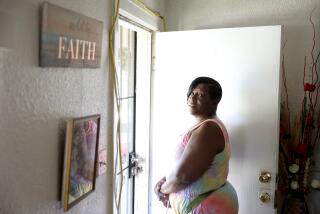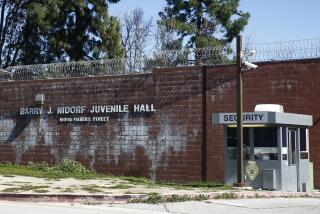First, Mend Families
- Share via
The girl had already run away from several group homes. Her violent, angry outbursts cost her almost every friend she’d made in middle school and won her no points with teachers. Conventional talking therapy hadn’t helped. But this young teen likes to draw, and she’s good at it.
As part of an experimental program, social workers with Los Angeles County’s Department of Children and Family Services linked her to an art therapist. Patients in art therapy use paint, clay, whatever medium attracts them, to represent their thoughts and feelings. Many find that process leads them to new insights and, ultimately, to more constructive behavior. The girl and her new therapist clicked.
The girl’s social workers also enlisted the one school friend who hadn’t walked away. The friend is an academic achiever who, with encouragement and guidance, now helps this foster child study and stay calm. School’s going better, she’s not so angry, the group home where she lives is mounting an exhibition of her artwork, and she and her mother are trying to repair their fractured relationship.
But the federal grant that has allowed county foster care workers to stitch together this unique quilt of support expired in June. While officials at the federal Department of Health and Human Services consider a proposal to renew this grant -- submitted after too much thumb-twiddling by county and state bureaucrats -- other children, just as troubled and in need of individual help, can’t get it.
Federal funds cover close to half of the county’s $1.4-billion foster care budget, with most of that rigidly channeled to clothe, feed and house the 27,400 children removed from abusive or neglectful parents. A five-year waiver from these rules has let Los Angeles and other counties experiment, spending more on therapy, peer support and other services to keep families from shattering, instead of just warehousing foster children. Initial research on this approach is positive, though longer-term study is needed.
State officials submitted a proposal to renew the grant on behalf of 10 California counties in late May. Los Angeles officials want to broaden the reach of their experiment. Rather than waiting until children are in foster care, their goal is to help troubled families before they split apart, perhaps by providing counseling, enlisting neighbors to baby-sit in a pinch or providing respite care for parents of severely troubled children. The waiver would also help fill an $11-million county budget hole following a loss of state child-welfare funds.
This is real-life thinking, spending in bursts to prevent years of costly and often damaging foster care. The purse-string controllers in the Health and Human Services Department need to forgive the state and county their tardy application and approve the funds.
More to Read
Sign up for Essential California
The most important California stories and recommendations in your inbox every morning.
You may occasionally receive promotional content from the Los Angeles Times.










